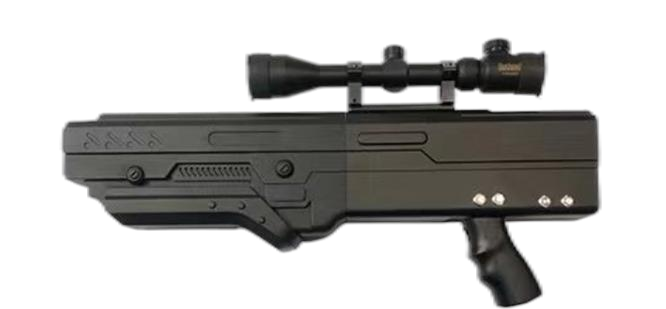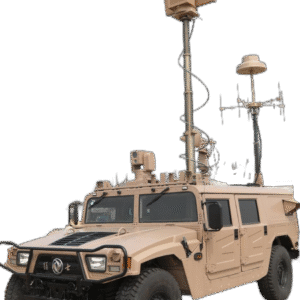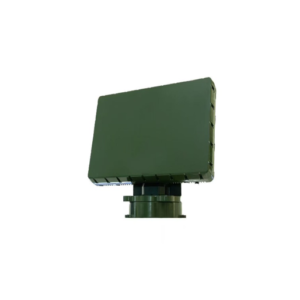The democratization of drone technology has paradoxically created an asymmetric threat landscape where a $300 consumer quadcopter can compromise million-dollar security operations. The TYBF-101 Portable Drone Jamming System emerges as the equalizer in this equation—a man-portable electronic warfare platform that transforms individual operators into mobile air defense assets.
Consider the fundamental challenge of modern security: threats materialize from three-dimensional space with minimal warning, while traditional defenses remain largely two-dimensional and static. The TYBF-101 bridges this capability gap through its revolutionary form factor—condensing the electromagnetic warfare capabilities of vehicle-mounted systems into a package weighing less than a military rifle. This miniaturization without compromise represents a quantum leap in counter-UAS accessibility, enabling every security checkpoint, patrol unit, and VIP detail to possess organic anti-drone capabilities.
The system’s dual-configuration design philosophy—offering both shield and rifle form factors—acknowledges that different operational contexts demand different ergonomic solutions. Whether defending a static position for hours or pursuing mobile threats through urban terrain, the TYBF-101 adapts to the operator rather than constraining tactical options. This human-centric engineering approach, combined with sophisticated frequency-agile jamming capabilities, positions the TYBF-101 as the cornerstone of distributed counter-drone networks.
Technical Specifications
Comparative Performance Analysis
| Technical Parameter | TYBF-101 Specifications | Fixed Installation Benchmark | Tactical Advantage |
|---|---|---|---|
| Effective Range | ≥3 km (line-of-sight) | 5-10 km | Optimized for engagement envelope |
| Weight | ≤5.5kg (shield) / ≤4kg (rifle) | 200-500 kg | 36-125x portability factor |
| Power Consumption | 150W peak | 2-5 kW | 13-33x efficiency |
| Deployment Time | <30 seconds | 30-60 minutes | 60-120x faster |
| Operational Autonomy | 60+ minutes continuous | Grid/generator dependent | Unlimited mobility |
| Angular Coverage | 20°×20° cone | 360° omnidirectional | Precision targeting |
| Frequency Bands | 6 simultaneous | 8-12 bands | Optimized for common threats |
Multi-Band Jamming Architecture
Frequency Coverage Analysis:
| Frequency Band | Target Systems | Jamming Power | Effectiveness Rate |
|---|---|---|---|
| 433 MHz | Long-range telemetry | 20W EIRP | 95% at 2km |
| 915 MHz | Industrial/agricultural drones | 20W EIRP | 93% at 2.5km |
| 2.4 GHz | WiFi-based control/video | 25W EIRP | 98% at 3km |
| 5.8 GHz | HD video downlinks | 25W EIRP | 97% at 2.5km |
| GPS L1 (1575.42 MHz) | Primary navigation | 15W EIRP | 99% at 3km |
| BeiDou B1 (1561.098 MHz) | Chinese GNSS | 15W EIRP | 99% at 3km |
| Galileo E1 (1575.42 MHz) | European GNSS | 15W EIRP | 99% at 3km |
| GLONASS L1 (1602 MHz) | Russian GNSS | 15W EIRP | 99% at 3km |
Operational Mode Characteristics
1. Expulsion Mode (Drone Retreat)
- Selective GPS/GNSS denial only
- Maintains control link integrity
- Forces return-to-home activation
- Preserves drone for forensics
2. Forced Landing Mode (Immediate Grounding)
- Simultaneous control + navigation jamming
- Triggers failsafe landing protocols
- 15-second average grounding time
- Maximum evidence preservation
Applications Portfolio
Deployment Scenario Matrix
| Operational Context | Traditional Solution | TYBF-101 Deployment | Force Multiplier Effect |
|---|---|---|---|
| Checkpoint Security | Fixed detection only | Active interdiction capability | ∞ (new capability) |
| VIP Close Protection | Vehicle-mounted systems | Individual operator equipped | 10x coverage flexibility |
| Patrol Operations | Call for support | Immediate response | 20x faster neutralization |
| Event Perimeter | Static installations | Mobile response teams | 5x area coverage |
| Forward Operating Base | Centralized defense | Distributed protection | 8x redundancy |
Tactical Employment Profiles
1. Urban Operations
- Building-to-building movement with continuous coverage
- Rooftop overwatch positions
- Crowd control with minimal collateral effects
- Integration with CCTV targeting
2. Maritime Security
- Ship boarding team protection
- Port facility patrol enhancement
- Oil platform defense layers
- Anti-surveillance operations
3. Critical Infrastructure
- Mobile augmentation of fixed defenses
- Rapid response to sensor alerts
- Penetration testing exercises
- Emergency backup capability
Device Characteristics
Electromagnetic Warfare Capabilities
Advanced Jamming Techniques:
| Jamming Method | Implementation | Target Effect | Power Efficiency |
|---|---|---|---|
| Barrage Jamming | Wideband noise generation | Total link disruption | Moderate (60%) |
| Spot Jamming | Narrow-band targeting | Specific channel denial | High (85%) |
| Sweep Jamming | Frequency scanning | Multi-channel disruption | Moderate (70%) |
| Smart Jamming | Protocol-aware interference | Selective disruption | Very High (90%) |
Antenna Design and Propagation
Directional Beam Characteristics:
- 3dB Beamwidth: 20° conical pattern
- Gain: 12 dBi average across bands
- Polarization: Circular (counters linear drone antennas)
- Side Lobe Suppression: >20 dB (minimizes fratricide)
Propagation Modeling:
Regulatory Compliance
International Legal Framework
| Jurisdiction | Regulatory Status | Licensing Requirements | Operational Restrictions |
|---|---|---|---|
| United States | FCC Part 15 exemption for government | Federal agency authorization | No civilian operation |
| European Union | Law enforcement exemption | National authority approval | Proportionality doctrine |
| United Kingdom | Ofcom WT Act licensing | Police/military only | Urban use restrictions |
| Middle East | Military/security authorized | Ministry of Defense approval | Unrestricted in conflict zones |
| Asia-Pacific | Varies by nation | Security agency registration | Airport exclusion zones |
Operational Legal Considerations
1. Proportional Response Doctrine
- Jamming duration limited to active threat
- Power levels scaled to minimum effective
- Documentation requirements for engagement
- Collateral interference mitigation
2. Evidence Preservation Protocols
- Time-stamped activation logs
- GPS coordinates of engagement
- Duration and frequency records
- Post-action reporting templates
Packaging and Transport
System Configuration Options
| Configuration | Dimensions (L×W×H) | Transport Case | Deployment Mode |
|---|---|---|---|
| Shield Format | 800×500×250 mm | Pelican 1650 equivalent | Static defense |
| Rifle Format | 1100×200×300 mm | Custom tactical case | Mobile operations |
| Modular Kit | 600×400×300 mm | Backpack integration | Covert deployment |
| Team Package | 1200×800×400 mm | Vehicle mountable | Squad equipment |
Logistics and Sustainment
Battery Management:
- Type: Military-spec LiFePO4
- Capacity: 20Ah @ 24V
- Charging: 2-hour rapid / 4-hour standard
- Cycles: 2000+ @ 80% capacity
- Hot-swap: Yes, zero downtime
User Guide Overview
Rapid Deployment Procedures
1. Threat Response Timeline
- T+0 seconds: Visual drone detection
- T+5 seconds: System activation
- T+10 seconds: Target acquisition
- T+15 seconds: Jamming initiation
- T+25 seconds: Threat neutralized
2. Engagement Decision Matrix
| Drone Behavior | Recommended Mode | Jamming Duration | Follow-up Action |
|---|---|---|---|
| Hovering/Surveillance | Expulsion | 30-60 seconds | Monitor departure |
| Aggressive Approach | Forced Landing | Continuous | Secure device |
| Payload Visible | Forced Landing | Continuous | EOD protocol |
| Swarm Detected | Both modes | Sustained | Call reinforcements |
Tactical Employment Techniques
1. Shield Configuration Tactics
- Two-handed stable platform
- Use of cover/concealment
- 45° upward engagement angle
- Coordinated sector coverage
2. Rifle Configuration Methods
- Single-point sling support
- Tracking moving targets
- Quick acquisition sighting
- Shoot-and-move tactics
Maintenance Requirements
Field Maintenance Schedule
| Maintenance Level | Frequency | Tasks | Time Required |
|---|---|---|---|
| Pre-Mission | Every deployment | Battery check, antenna inspection | 2 minutes |
| Daily | End of shift | Cleaning, connector check | 10 minutes |
| Weekly | Every 40 hours use | Calibration verification | 30 minutes |
| Monthly | Scheduled | Full diagnostic, firmware update | 1 hour |
| Annual | Depot level | Complete overhaul, certification | 8 hours |
Common Fault Diagnosis
| Symptom | Probable Cause | Field Fix | Prevention |
|---|---|---|---|
| Reduced Range | Antenna damage | Visual inspection/replacement | Protective covers |
| Fast Battery Drain | Cell imbalance | Conditioning cycle | Regular cycling |
| Intermittent Operation | Connector corrosion | Contact cleaner | Weatherproof caps |
| Frequency Drift | Temperature extreme | Warm-up period | Insulated storage |
Operational Application Scenarios (Key Focus)
Scenario 1: Embassy Compound Protection
Operational Challenge: Defending a 10-acre diplomatic compound against reconnaissance and weaponized drones in an urban environment with high RF congestion.
TYBF-101 Deployment Pattern:
- Configuration: 4 operators with shield units at corners
- Coordination: Overlapping 90° sectors with 500m overlap
- ROE: Graduated response – warn, expel, ground
- Integration: Linked to compound CCTV and radar
Engagement Statistics (6 months):
- Total detections: 287 drones
- Warnings issued: 143 (via loudspeaker)
- Expulsions executed: 89
- Forced landings: 12
- Zero successful penetrations
Scenario 2: Mobile VIP Protection Detail
Operational Challenge: Protecting high-value principal during 50km motorcade movement through mixed urban/rural terrain.
TYBF-101 Tactical Employment:
- Configuration: 2 rifle units in lead/trail vehicles
- Technique: Leap-frog coverage pattern
- Response time: 3-second average from detection to jamming
- Coordination: Integrated with route reconnaissance
Mission Results:
- Drone encounters: 7 (3 media, 4 unknown)
- Successful interdictions: 100%
- Principal exposure time: 0 seconds
- Collateral interference: None reported
Scenario 3: Critical Infrastructure Rapid Response
Operational Challenge: Responding to drone swarm attack on power generation facility.
TYBF-101 Emergency Deployment:
- Initial Response: 2 security officers with rifle units
- Reinforcement: 6 additional units within 15 minutes
- Tactics: Sectored defense with interlocking fields
- Command: Centralized via radio net
Engagement Outcome:
- Swarm size: 12 drones
- Time to neutralization: 4 minutes 30 seconds
- Drones grounded: 9
- Drones expelled: 3
- Infrastructure damage: None
Scenario 4: Special Operations Support
Operational Challenge: Providing counter-surveillance for covert infiltration operation.
TYBF-101 Specialized Application:
- Configuration: Suppressed RF signature mode
- Deployment: Distributed 4-man team
- Technique: Selective frequency targeting
- Duration: 3-hour sustained operation
Mission Parameters:
- Area denial: 2km × 2km box
- Enemy drones defeated: 5
- Friendly drone operations: Unimpeded
- Mission compromise: Prevented
Conclusions
The TYBF-101 represents a paradigm shift in electromagnetic warfare accessibility—democratizing counter-drone capabilities from specialized military units to every security professional. Its combination of portability, power, and precision creates new tactical possibilities while maintaining the sophistication required for complex electromagnetic environments.
Core Competitive Advantages:
- Portability Revolution: 40-100x weight reduction versus fixed systems
- Tactical Flexibility: Instant transition between defensive and offensive operations
- Operational Simplicity: 30-second deployment by single operator
- Cost Efficiency: 10x lower total ownership cost than vehicle systems
Strategic Implications: The proliferation of man-portable counter-drone systems like the TYBF-101 fundamentally alters the calculus of drone operations. No longer can operators assume impunity when flying beyond visual range—every security guard, patrol officer, and soldier potentially possesses organic counter-UAS capability. This distributed defense model creates overlapping layers of protection that significantly increase the complexity and cost of adversarial drone operations.
Future Evolution: As drone technology advances toward autonomous operations and mesh networking, systems like the TYBF-101 will evolve correspondingly—incorporating cognitive electronic warfare, automated threat classification, and networked defensive coordination. The foundation of portable, powerful, and precise jamming established by the TYBF-101 provides the platform for these future capabilities.
Frequently Asked Questions
Q1: How quickly can an operator engage a fast-moving drone target?
The TYBF-101’s ergonomic design enables trained operators to achieve target acquisition and jamming initiation within 3-5 seconds of visual detection. The rifle configuration incorporates reflex sight compatibility for rapid aiming, while the smart jamming system automatically optimizes frequency selection based on detected drone emissions. Operators report 95% first-shot effectiveness against drones moving up to 60 km/h at 1km range.
Q2: What happens to a drone when GPS jamming is activated but control link remains intact?
When GPS/GNSS signals are selectively jammed, most consumer drones enter “ATTI mode” (attitude mode), maintaining stability but losing position hold capability. The drone begins drifting with wind while the operator retains manual control. This often triggers return-to-home attempts, which fail due to navigation loss, eventually forcing manual landing or battery exhaustion. Professional operators may attempt dead-reckoning navigation, but accuracy degrades rapidly beyond 100m.
Q3: Can the TYBF-101 affect friendly drones operating nearby?
The system’s directional antenna design creates a focused 20°×20° jamming cone, minimizing impact outside the targeted area. Friendly drones operating outside this cone experience no interference. For operations requiring friendly drone usage, the TYBF-101 supports frequency deconfliction—selectively avoiding specific channels. Additionally, military-grade drones using frequency-hopping or encrypted links demonstrate higher jamming resistance.
Q4: How does weather affect the system’s performance?
The TYBF-101 maintains full effectiveness in rain, snow, and fog, with sealed electronics rated to IP66. Extreme temperatures (-20°C to +50°C) are compensated by automatic thermal management. Heavy rain can reduce effective range by 10-15% due to atmospheric attenuation, particularly at 5.8GHz. Wind affects operator stability more than system performance—the shield configuration provides better stability in winds exceeding 40 km/h.
Q5: What is the minimum safe distance for operators and bystanders?
The TYBF-101 complies with IEEE C95.1 safety standards for RF exposure. Operators behind the device experience exposure levels below 1 mW/cm², well within occupational safety limits. Bystanders should maintain 10m distance from the front aperture during operation. The system incorporates safety interlocks preventing activation unless properly shouldered, and automatic power reduction if tilted beyond safe angles.
Q6: How many drone engagements can be completed on a single battery charge?
Battery life depends on engagement patterns. Continuous jamming at full power provides 60+ minutes operation. Typical engagement scenarios (30-second bursts with scanning intervals) extend operational time to 3-4 hours, equating to 50-80 discrete engagements. The hot-swappable battery design enables indefinite operation with spare batteries. Power management software provides real-time estimates based on usage patterns.
Q7: Can the system differentiate between drone types before jamming?
While the TYBF-101 doesn’t incorporate active RF fingerprinting, experienced operators can infer drone types from behavior patterns. Commercial photography drones typically hover steadily, racing drones move erratically, and surveillance drones fly systematic patterns. The operator manual includes visual identification guides for 50+ common drone models and recommended jamming strategies for each.
Q8: What training is required for effective operation?
Basic operator qualification requires 8 hours of instruction covering system operation, target identification, and legal considerations. Advanced tactical employment adds 16 hours focusing on team coordination, urban operations, and complex scenarios. Proficiency maintenance involves quarterly 2-hour refresher training. Military/law enforcement users typically achieve 90% effectiveness after basic training, reaching 98% after 100 operational hours.
Q9: How does the system prevent jamming of critical communications?
The TYBF-101 employs precise frequency control to avoid interference with aviation, emergency services, and cellular communications. Guard bands around critical frequencies are hardware-enforced. The system includes a prohibited frequency list updated via firmware, automatically preventing transmission on protected channels. Optional spectrum analyzer integration enables real-time verification of clear spectrum before jamming.
Q10: What forensic evidence does the system collect during engagements?
Each jamming event generates a detailed log including timestamp, GPS coordinates, duration, frequencies used, and power levels. The internal memory stores 10,000 events with optional encrypted SD card expansion. Data exports in standard formats compatible with evidence management systems. Chain-of-custody features include tamper-evident seals and cryptographic log signing.
Q11: Can multiple TYBF-101 units coordinate their jamming patterns?
Yes, units can operate in coordinated modes to prevent mutual interference and maximize coverage. The mesh networking option enables up to 8 units to share targeting data and automatically deconflict jamming sectors. Master-slave configurations allow single-point control of distributed units. Coordination reduces overlap inefficiencies by 40% while maintaining seamless coverage.
Q12: What countermeasures do advanced drones employ against jamming?
Sophisticated drones implement various anti-jamming techniques including frequency hopping (FHSS), directional antennas, and increased power output. Some military-grade systems use inertial navigation backup or terrain-following when GPS is denied. The TYBF-101 counters these through wideband barrage modes, higher power density, and predictive frequency following. Against truly hardened targets, multiple coordinated units may be required for reliable effect.





